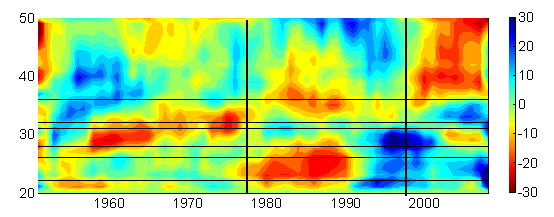Climate change at interdecadal timescale is an important component of climate system, and a major feature of East Asian monsoon system. This study conducted by Yali Zhu and Huijun Wang et al. revealed the decadal changes of the summer precipitation in East China in late 1990s, with increased rainfall in the Huang-Huai River region (HR) and decreased in the Yangtze River region (YR) during 2000–2008 in comparison to 1979–1999. The main features of the atmospheric circulation related to the increased precipitation in the HR are the strengthened ascending motion and slightly increased air humidity, which is partly due to the weakened moisture transport out of the HR to the western tropical Pacific (associated with the weakened westerly over East Asia and the warming center over the Lake Baikal). The rainfall decrease in the YR is related to the weakened ascending motion and reduced water vapor content, which is mainly related to the weakened southwesterly moisture flux into the YR (associated with the eastward recession of the Western Pacific Subtropical High).
The global sea surface temperature (SST) also shows significant changes during 2000–2008 relative to 1979–1999. The shift of the Pacific decadal oscillation (PDO) to a negative phase probably induces the warming over the Lake Baikal and the weakened westerly jet through the air-sea interaction in the Pacific, and thus changes the summer precipitation pattern in East China. Numerical experiments using an atmospheric general circulation model, with prescribed all-Pacific SST anomalies of 2000–2008 relative to 1979–1999, also lend support to the PDO’s contribution to the warming over the Lake Baikal and the weakened westerlies over East China.
Zhu,Yali, Huijun Wang, Wen Zhou, Jiehua Ma, 2011: Recent changes in the summer precipitation pattern in East China and the background circulation, Climate Dynamics, 36, 1463-1473. DOI: 10.1007/s00382-010-0852-9.

Fig. The latitude-time cross-section of the 7 year smoothed summer-mean (June–July–August) rainfall anomalies averaged over 110E–121E, shown as the percentage of the rainfall departure from the 1951–2008 seasonal mean. The thick vertical lines approximate the changing point.
